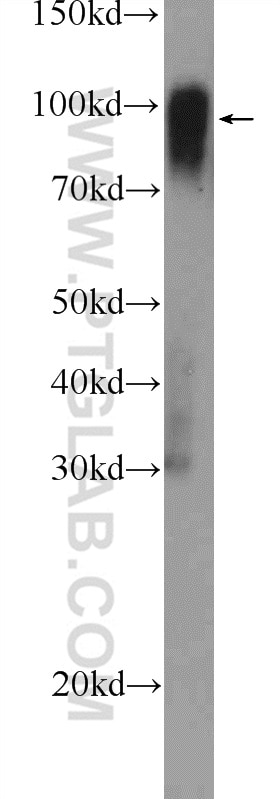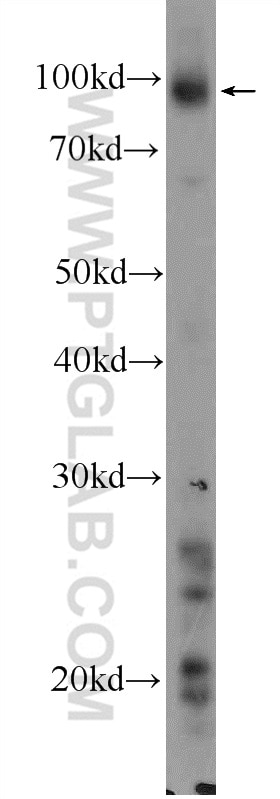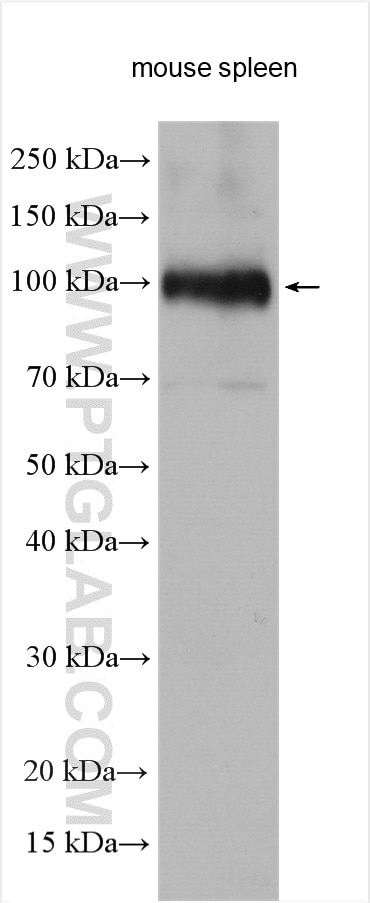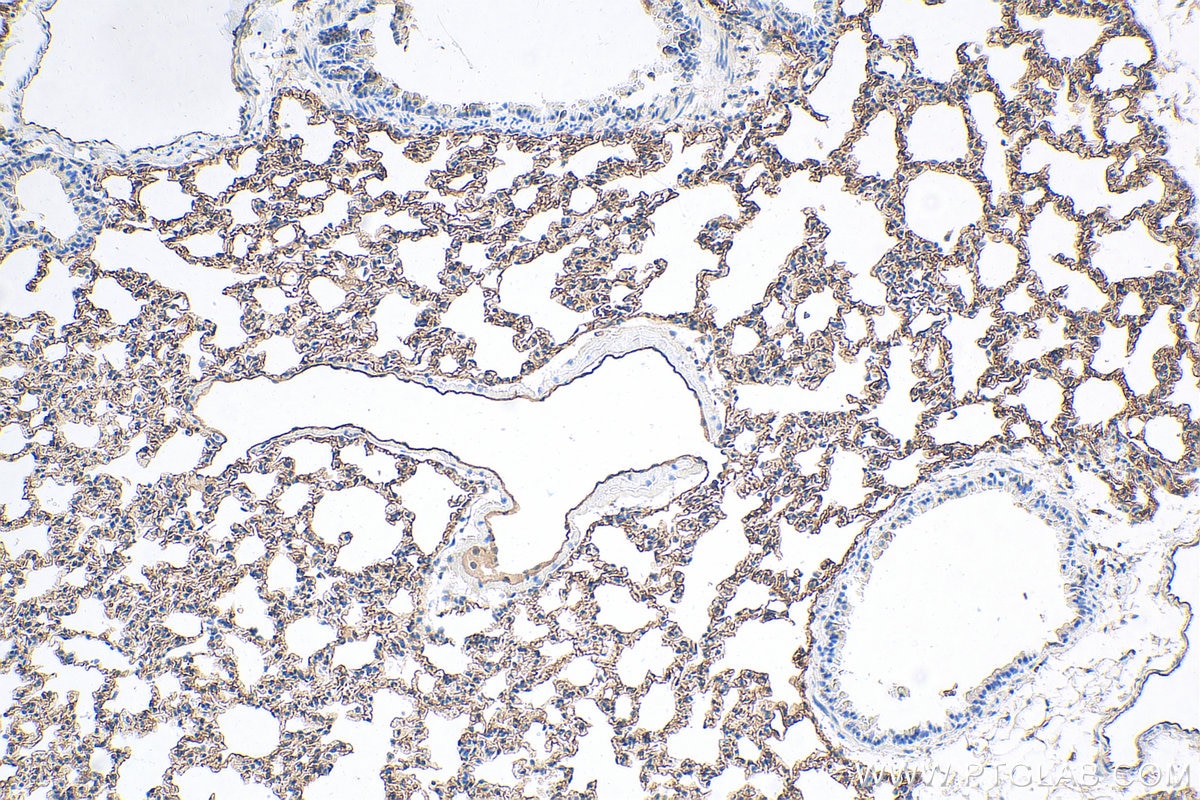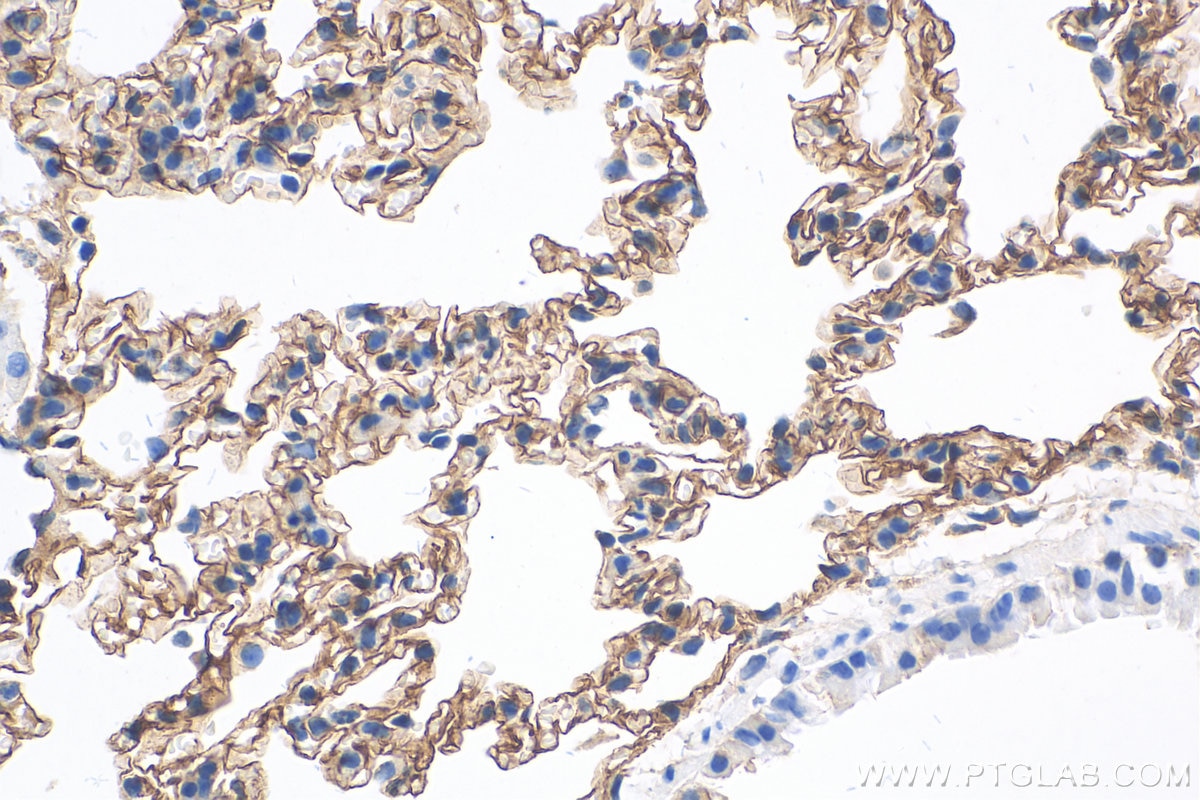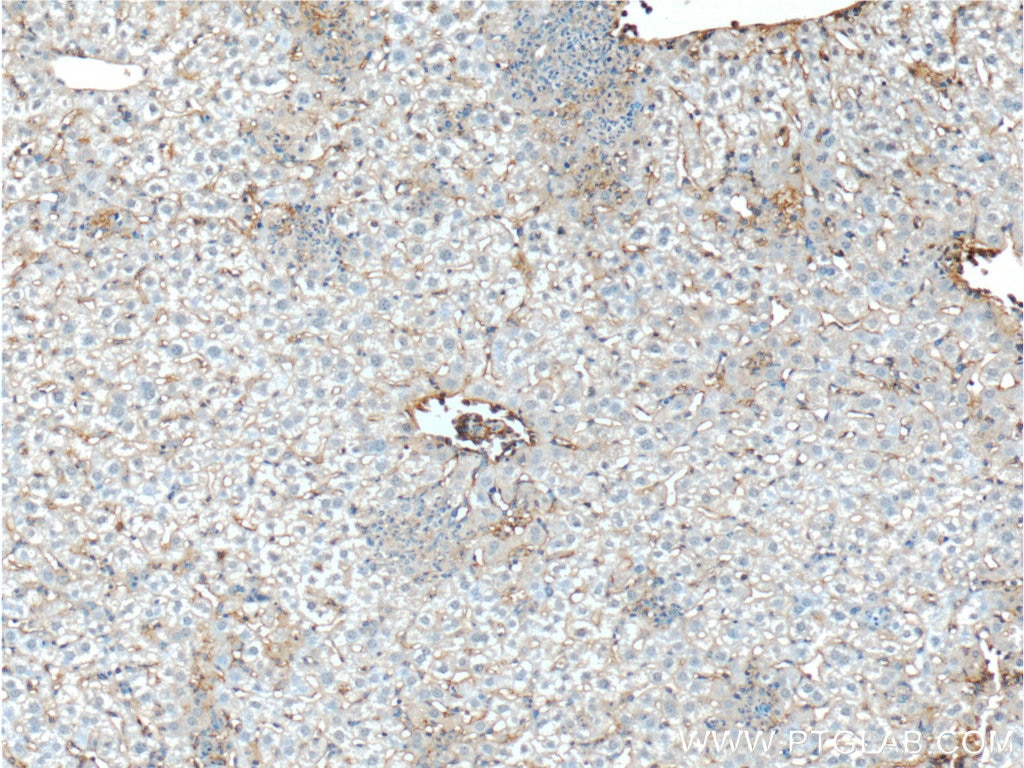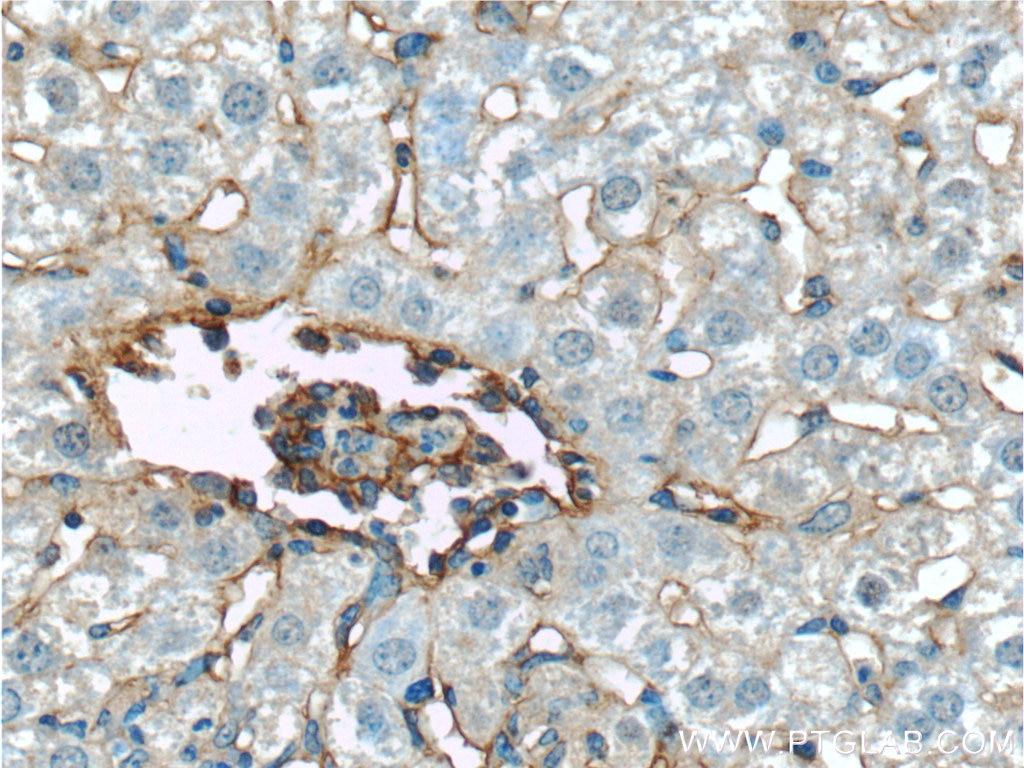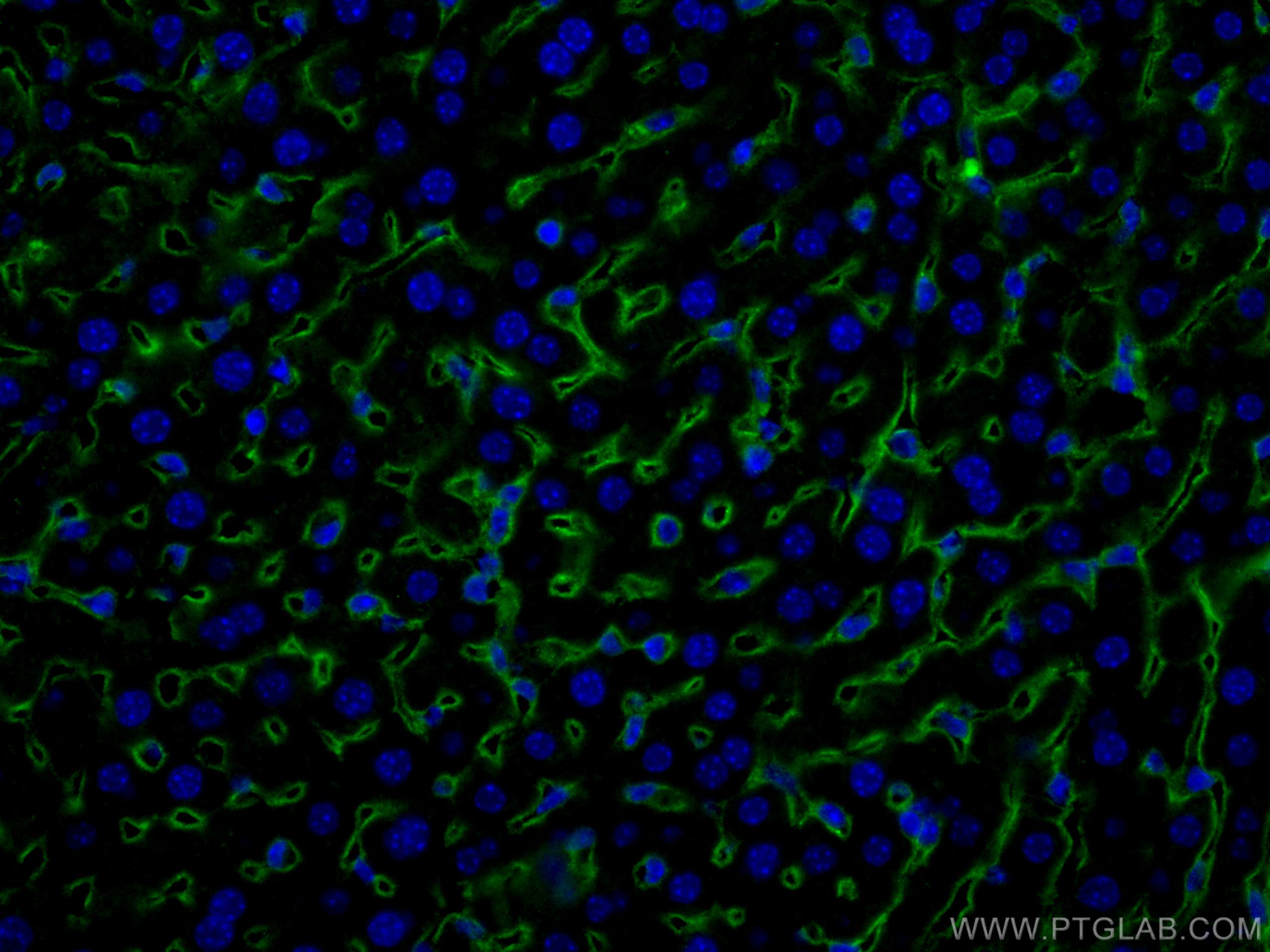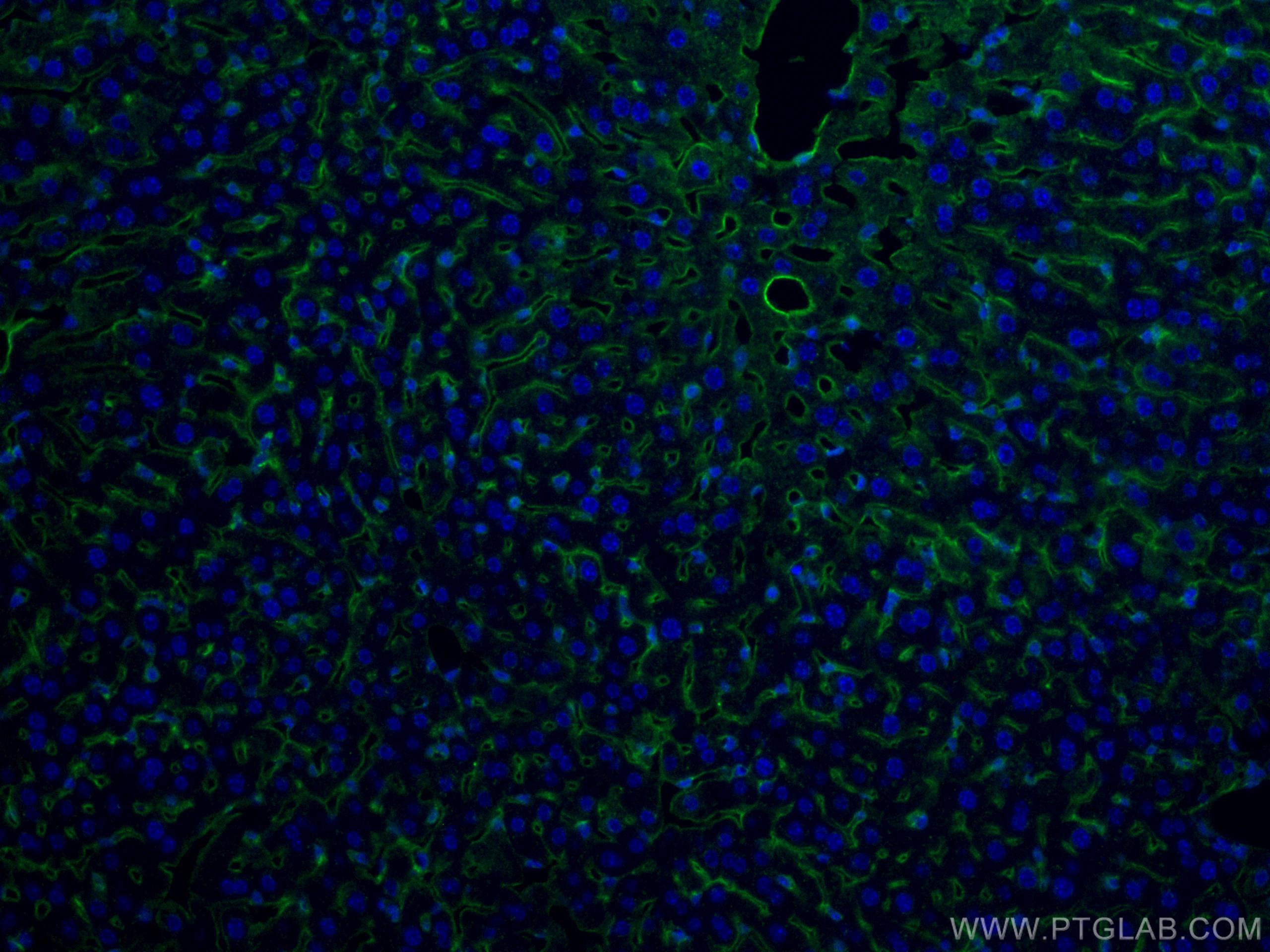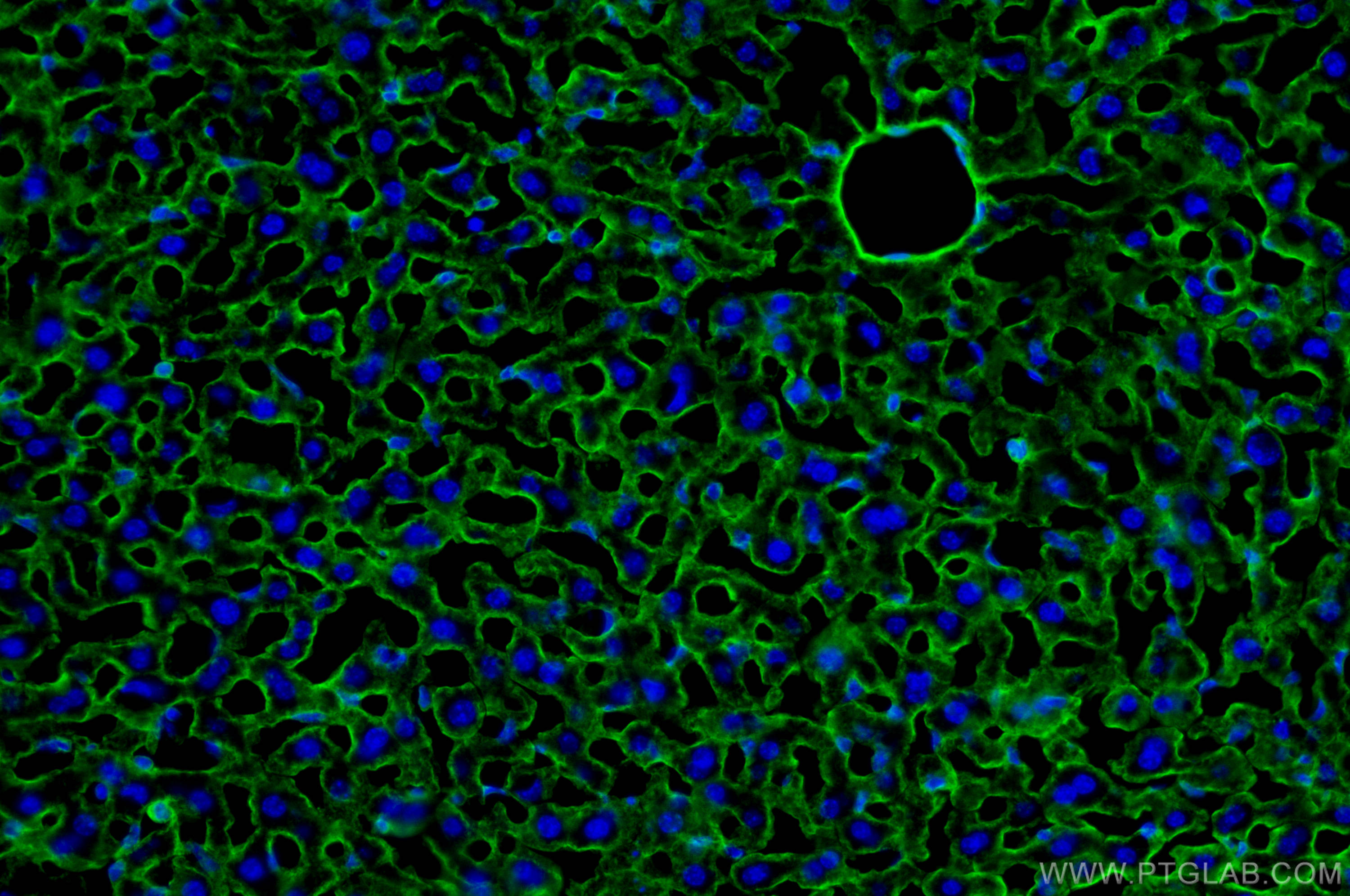- Featured Product
- KD/KO Validated
ICAM-1/CD54 Polyklonaler Antikörper
ICAM-1/CD54 Polyklonal Antikörper für WB, IHC, IF-P, IF-Fro, ELISA
Wirt / Isotyp
Kaninchen / IgG
Getestete Reaktivität
Maus, Ratte und mehr (2)
Anwendung
WB, IHC, IF-P, IF-Fro, ELISA
Konjugation
Unkonjugiert
Kat-Nr. : 10020-1-AP
Synonyme
Geprüfte Anwendungen
| Erfolgreiche Detektion in WB | Maushirngewebe, Mauslebergewebe, Mausmilzgewebe |
| Erfolgreiche Detektion in IHC | Mauslungengewebe, Mauslebergewebe Hinweis: Antigendemaskierung mit TE-Puffer pH 9,0 empfohlen. (*) Wahlweise kann die Antigendemaskierung auch mit Citratpuffer pH 6,0 erfolgen. |
| Erfolgreiche Detektion in IF-P | Mauslebergewebe |
| Erfolgreiche Detektion in IF-Fro | Mauslebergewebe |
Empfohlene Verdünnung
| Anwendung | Verdünnung |
|---|---|
| Western Blot (WB) | WB : 1:1000-1:4000 |
| Immunhistochemie (IHC) | IHC : 1:3200-1:12800 |
| Immunfluoreszenz (IF)-P | IF-P : 1:500-1:2000 |
| Immunfluoreszenz (IF)-FRO | IF-FRO : 1:50-1:500 |
| It is recommended that this reagent should be titrated in each testing system to obtain optimal results. | |
| Sample-dependent, check data in validation data gallery | |
Veröffentlichte Anwendungen
| KD/KO | See 2 publications below |
| WB | See 58 publications below |
| IHC | See 22 publications below |
| IF | See 22 publications below |
Produktinformation
10020-1-AP bindet in WB, IHC, IF-P, IF-Fro, ELISA ICAM-1/CD54 und zeigt Reaktivität mit Maus, Ratten
| Getestete Reaktivität | Maus, Ratte |
| In Publikationen genannte Reaktivität | hamster, Maus, Ratte, Rind |
| Wirt / Isotyp | Kaninchen / IgG |
| Klonalität | Polyklonal |
| Typ | Antikörper |
| Immunogen | Peptid |
| Vollständiger Name | intercellular adhesion molecule 1 |
| Berechnetes Molekulargewicht | 59 kDa |
| Beobachtetes Molekulargewicht | 95-100 kDa |
| GenBank-Zugangsnummer | NM_010493 |
| Gene symbol | ICAM-1 |
| Gene ID (NCBI) | 15894 |
| Konjugation | Unkonjugiert |
| Form | Liquid |
| Reinigungsmethode | Antigen-Affinitätsreinigung |
| Lagerungspuffer | PBS with 0.02% sodium azide and 50% glycerol |
| Lagerungsbedingungen | Bei -20°C lagern. Nach dem Versand ein Jahr lang stabil Aliquotieren ist bei -20oC Lagerung nicht notwendig. 20ul Größen enthalten 0,1% BSA. |
Hintergrundinformationen
Where is ICAM-1 expressed?
Intercellular Adhesion Molecule 1 (ICAM-1), also known as Cluster of Differentiation 54 (CD54) is a transmembrane glycoprotein constitutively expressed at low levels in endothelial cells, pericytes and on some lymphocytes and monocytes1. It is located at the cytoplasmic membrane, with a large extracellular region of mainly hydrophobic amino acids joined to a small transmembrane region and a cytoplasmic tail. It has a molecular weight of 60 to 115 kDa depending on the level of glycosylation.
What is the function of ICAM-1?
ICAM-1 is important in both innate and adaptive immune responses as an adhesion molecule. Although it is constitutively expressed, in the presence of pro-inflammatory cytokines such as TNFα the endothelial cells are activated and upregulate expression of ICAM-12. In blood vessels lined with endothelial cells, leukocytes that are rolling over the surface are able to bind to ICAM-1 and transmigrate through the endothelial barrier and into the tissue. The initial binding of the leukocytes to ICAM-1 causes a Ca2+ release that initiates endothelial cell contraction and weakening of the intercellular tight junctions3, 4. This protein can be used as an indicator of endothelial activation and of vascular inflammation.
What is the role of ICAM-1 in disease?
Beyond the role in the immune response, ICAM-1 has also been identified as the target of attachment for the human rhinovirus, the cause of the common cold. Binding of the virus to ICAM-1 causes the viral capsid to uncoat and leads to release of the genetic material5.
Hubbard, A. K. & Rothlein, R. Intercellular adhesion molecule-1 (ICAM-1) expression and cell signaling cascades. Free Radic. Biol. Med. 28, 1379-86 (2000).
Long, E. O. ICAM-1: getting a grip on leukocyte adhesion. J. Immunol. 186, 5021-3 (2011).
Lawson, C. & Wolf, S. ICAM-1 signaling in endothelial cells. (2009).
Lyck, R. & Enzmann, G. The physiological roles of ICAM-1 and ICAM-2 in neutrophil migration into tissues. Curr. Opin. Hematol. 22, 53-59 (2015).
Xing, L., Casasnovas, J. M. & Cheng, R. H. Structural analysis of human rhinovirus complexed with ICAM-1 reveals the dynamics of receptor-mediated virus uncoating. J. Virol. 77, 6101-7 (2003).
Bui, T. M., Wiesolek, H. L., & Sumagin, R. ICAM-1: A master regulator of cellular responses in inflammation, injury resolution, and tumorigenesis. Journal of leukocyte biology. 108(3), 787-799 (2020).
Protokolle
| PRODUKTSPEZIFISCHE PROTOKOLLE | |
|---|---|
| WB protocol for ICAM-1/CD54 antibody 10020-1-AP | Protokoll herunterladen |
| IHC protocol for ICAM-1/CD54 antibody 10020-1-AP | Protokoll herunterladenl |
| IF protocol for ICAM-1/CD54 antibody 10020-1-AP | Protokoll herunterladen |
| STANDARD-PROTOKOLLE | |
|---|---|
| Klicken Sie hier, um unsere Standardprotokolle anzuzeigen |
Publikationen
| Species | Application | Title |
|---|---|---|
Immunity Toll-like receptor 4 signaling by follicular dendritic cells is pivotal for germinal center onset and affinity maturation. | ||
Nature Mechanosensing by β1 integrin induces angiocrine signals for liver growth and survival. | ||
Gastroenterology ECM1 Prevents Activation of Transforming Growth Factor β, Hepatic Stellate Cells, and Fibrogenesis in Mice. | ||
Hepatology Angiocrine Wnt signaling controls liver growth and metabolic maturation in mice. | ||
Nat Commun Reducing Akt2 in retinal pigment epithelial cells causes a compensatory increase in Akt1 and attenuates diabetic retinopathy | ||
EBioMedicine Patient-derived melanoma organoid models facilitate the assessment of immunotherapies |
Rezensionen
The reviews below have been submitted by verified Proteintech customers who received an incentive for providing their feedback.
FH Iram (Verified Customer) (06-13-2022) | Very good antibody for immunoblotting
|
FH Balawant (Verified Customer) (05-08-2022) | This antibody I have used from the total cell lysate of pancreatic tissue from the mice tissue . this antibody is working good.
|
FH Susmita (Verified Customer) (03-11-2022) | This antibody wonderfully works for my WB.
|
FH Alice (Verified Customer) (08-21-2020) | We use this primer antibody to do IHC staining (Post mouse lung transfer surgery) .
|
